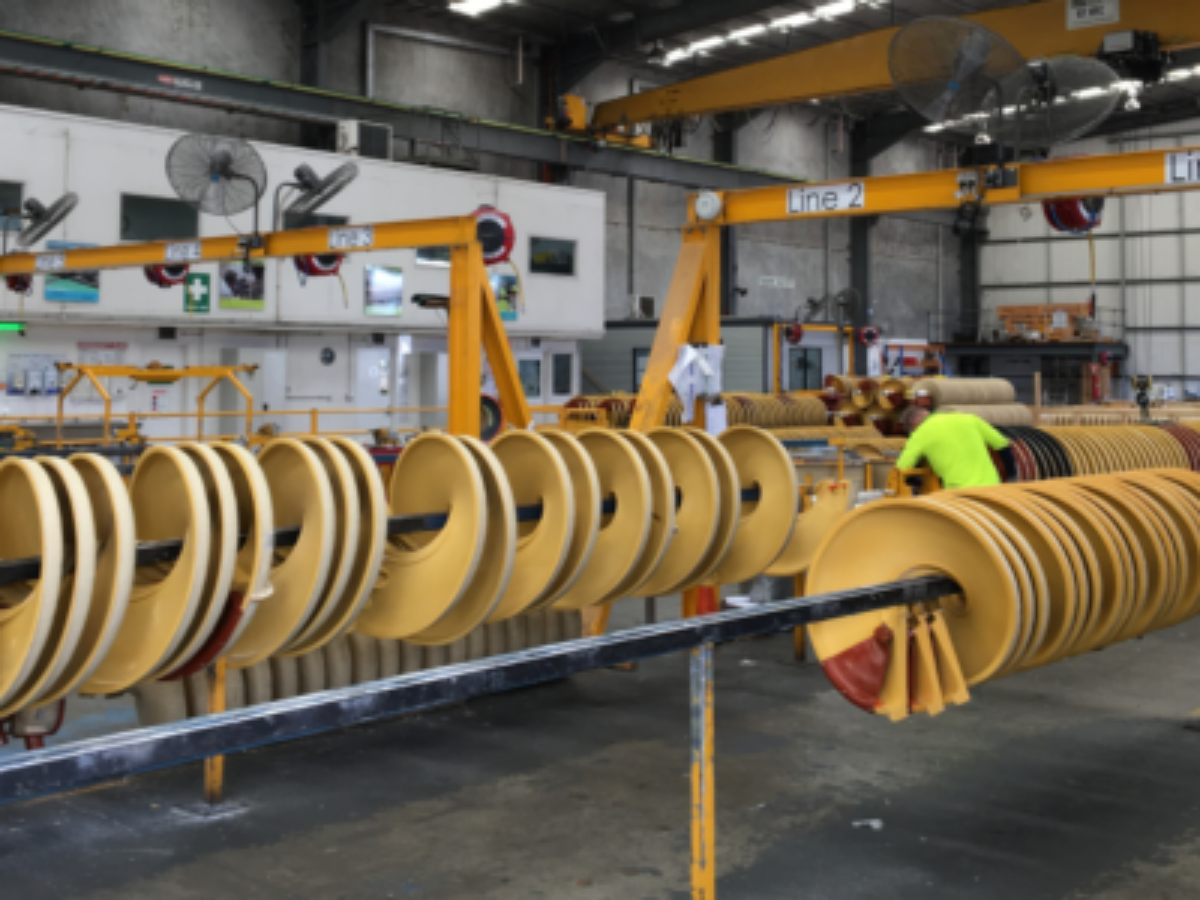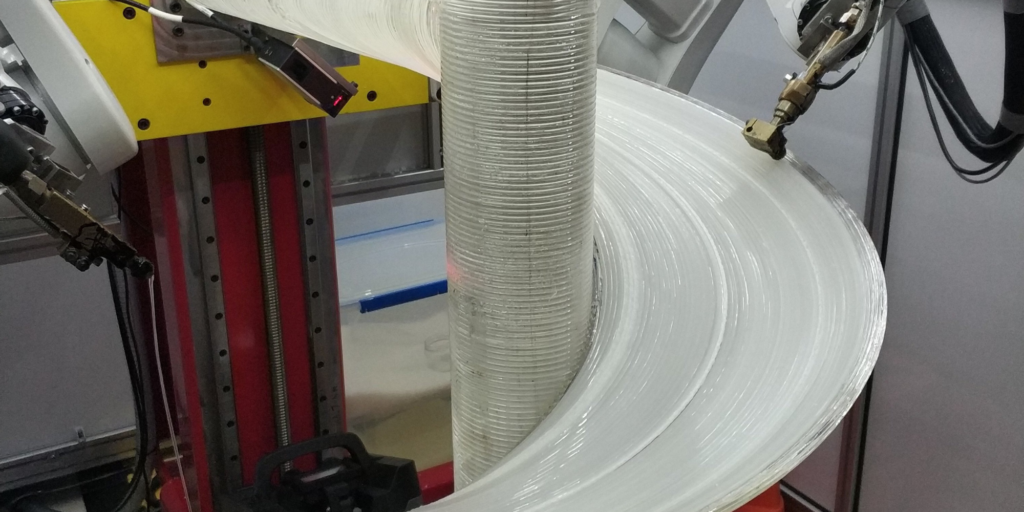Additive manufacturing puts a new spin on an old mining industry product

Like countless other items, spiral separators (or concentrators) could be called deceptively simple, both in their function and form.
A slurry goes in the top, and the different densities of minerals and sands see each separate on the way to the bottom.
“It’s a dead simple shape – it’s really a helical shape with a special curve on its cross-section,” explains Thomas Romeijn, who spent the last four years of his life focussed on the complexities of these devices.
“But to understand the separation process has been a topic of research for many years now.”
These pieces of equipment have been around since maybe the 1950s, explains the engineer, first made of cast iron, then later of fibreglass. Romeijn’s employer, the Downer-owned Mineral Technologies, exports them all over the world, and has been collaborating with UTS on the separators’ next chapter.
As with many other products, the geometric freedom offered by 3D printing appears likely to reshape separation spirals.
Last week the results of the Mineral Technologies-UTS collaboration – budgeted at almost $8 million, running four-and-a-half years, and supported by a $1.4 million grant from the Innovative Manufacturing CRC – were on display at the IMCRC’s Innovative Manufacturing Accelerated conference.
 The project between the university’s Rapido division and the mining technology business has yielded a novel additive manufacturing machine, driven by the need for something that could create spirals with the same ten-year service life as their fibreglass forerunners, but able to customise to specific orebodies.
The project between the university’s Rapido division and the mining technology business has yielded a novel additive manufacturing machine, driven by the need for something that could create spirals with the same ten-year service life as their fibreglass forerunners, but able to customise to specific orebodies.
“It looks like an impossible shape to 3D print,” Dr Michael Behrens, a mechatronic engineer and the Principal Delivery Manager of Engineering and IT Solutions at Rapido, tells @AuManufacturing of a spiral.
The resulting machine, was based on “a bit of a mad idea” to “print sideways,” in something he likens to lathing an object in reverse.
“It’s an incredibly complex machine that we’ve created here,” explains Behrens.
“It’s customised specifically for creating these particular parts, and that lets us increase efficiency and reduce costs, but it means we can’t use any of the standard, off-the-shelf slicers, for example. So we’ve had to ‘roll our own’ custom slicer for this, so it all operates in polar coordinates, and the machine has got 14 degrees of freedom, so there’s a lot of moving parts…”
In this episode of @AuManufacturing Conversations with Brent Balinski, we hear from Romeijn and Behrens about the project and the resulting machine, dubbed “Sidewinder”, and how it continues the necessary evolution of separation.
“The ores back in the day! I looked it up and they were shovelling out ilmenite off the beach at 90 per cent grade,” says Romeijn.
“Which is absolutely unheard of these days. And we’re looking at a percentage below one per cent in your orebody.”
Episode guide
0:20 – Introduction to guests.
1:40 – Why is this next step necessary?
2:56 – The possible benefits around safety, quicker iterations, and customisation for different orebodies.
5:00 – Some of the complexities of separation.
6:08 – Why the machines use FDM 3D printing technology. And have they developed any special resins for the job?
7:36 – Romeijn’s PhD and how it relates to the project. Considering geometry, loads and materials testing.
9:41 – Technical challenges to the project including fluid flow simulation and building the machine.
12:28 – “It’s printed without a support structure, which is quite unheard of.”
13:38 – Ways to define innovation. “A practical way of doing something new,” or “ a new use for things that already exist.”
14:50 – How ready until this machine will be used in the field?
15:32 – Shipping printers rather than air to users.
17:04 – Final words.
Pictures: Supplied
@aumanufacturing Sections
Analysis and Commentary Awards Defence Manufacturing News Podcast Technology Videos










